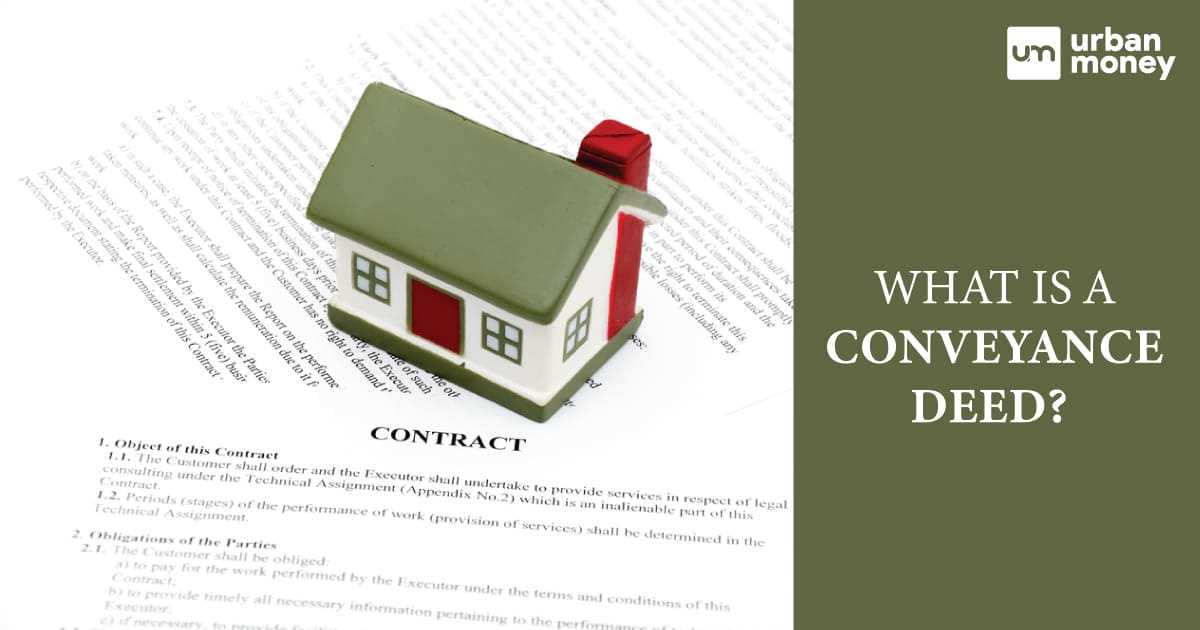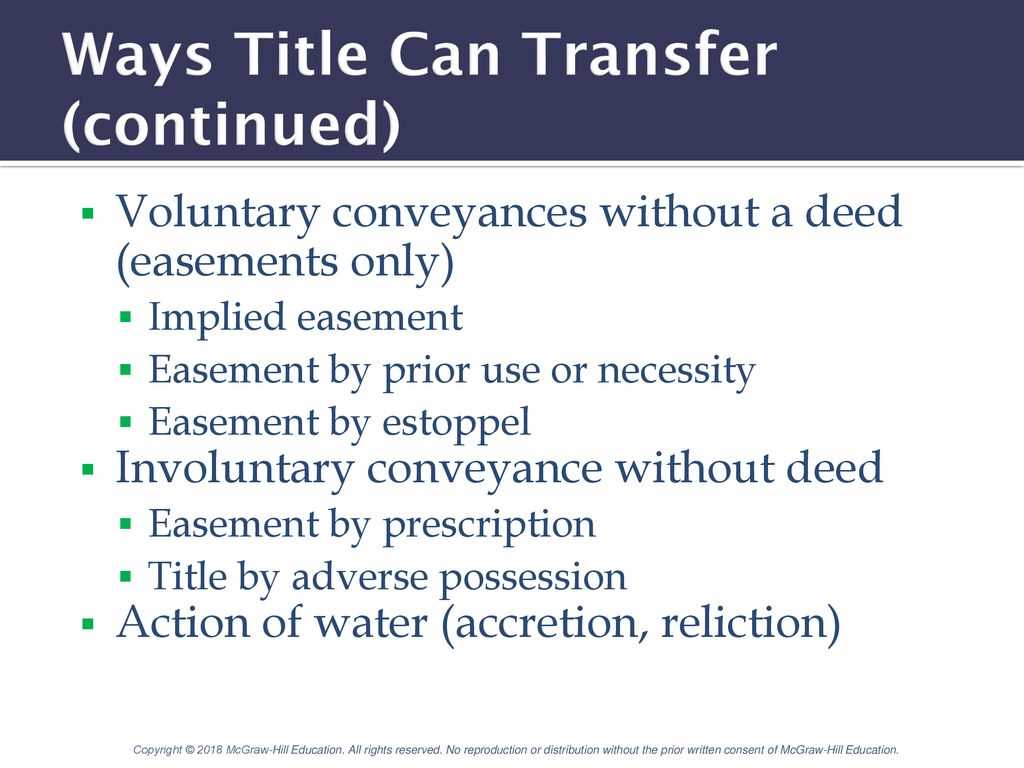What is Voluntary Conveyance?
Unlike involuntary conveyance, which occurs through legal actions such as foreclosure or eminent domain, voluntary conveyance is a consensual transaction between the parties involved. It requires the grantor to have full legal capacity and the intention to transfer the property willingly.
Types of Voluntary Conveyance
There are different types of voluntary conveyance, depending on the nature of the transfer:
- Gift Deed: A gift deed is a voluntary conveyance where the grantor transfers the property as a gift to the grantee. This type of conveyance is often used for estate planning purposes or to transfer property to family members.
- Sale Deed: A sale deed is a voluntary conveyance where the grantor transfers the property to the grantee in exchange for monetary consideration. This is the most common type of voluntary conveyance in real estate transactions.
- Quitclaim Deed: A quitclaim deed is a voluntary conveyance where the grantor transfers their interest in the property to the grantee without making any warranties or guarantees about the property’s title. This type of conveyance is often used to clear up any potential ownership disputes or to transfer property between family members.
Process of Voluntary Conveyance

The process of voluntary conveyance typically involves the following steps:
- Agreement: The grantor and grantee enter into a voluntary conveyance agreement, which outlines the terms and conditions of the transfer.
- Preparation of Deed: The grantor prepares the necessary legal documents, such as a gift deed, sale deed, or quitclaim deed, depending on the type of conveyance.
- Execution of Deed: The grantor signs the deed in the presence of a notary public or other authorized witnesses to make it legally valid.
- Delivery and Acceptance: The grantor delivers the executed deed to the grantee, who accepts the transfer of ownership.
Benefits of Voluntary Conveyance
Voluntary conveyance offers several benefits for both the grantor and the grantee:
- Transfer of Ownership: Voluntary conveyance allows the grantor to transfer their property ownership to another party, whether as a gift or for monetary consideration.
- Estate Planning: Voluntary conveyance can be used as a strategic tool for estate planning, allowing the grantor to transfer property to family members or beneficiaries.
- Clearing Ownership Disputes: Quitclaim deeds can be used to clear up any potential ownership disputes or clouded titles, providing a clean transfer of ownership.
- Tax Implications: Depending on the nature of the conveyance, there may be tax implications for both the grantor and the grantee, such as gift taxes or capital gains taxes.
Considerations for Voluntary Conveyance
Before engaging in voluntary conveyance, it is important to consider the following:
- Legal Advice: It is advisable to seek legal advice from a qualified attorney to ensure compliance with all legal requirements and to understand the implications of the conveyance.
- Title Search: Conducting a thorough title search is essential to identify any potential liens, encumbrances, or claims that may affect the property’s ownership.
- Tax Implications: Consult with a tax professional to understand the tax implications of the conveyance, such as gift taxes or capital gains taxes.
- Documentation: Properly prepare and execute all necessary legal documents, such as deeds and transfer forms, to ensure a smooth and legally valid conveyance.
The Process of Voluntary Conveyance
Voluntary conveyance refers to the transfer of property from one party to another by choice, without any legal obligation or external pressure. This process involves several steps that need to be followed to ensure a smooth and legal transfer of ownership.
1. Initiation
The process of voluntary conveyance begins with the initiation of the transfer. This can be done by the current owner of the property, who decides to transfer the ownership voluntarily. The owner may have various reasons for initiating voluntary conveyance, such as financial difficulties, change in personal circumstances, or simply a desire to transfer the property to someone else.
2. Agreement
Once the decision to transfer the property voluntarily is made, the next step is to reach an agreement between the current owner and the recipient of the property. This agreement should outline the terms and conditions of the transfer, including the purchase price, if any, and any other relevant details. It is important for both parties to carefully review and negotiate the agreement to ensure that their interests are protected.
3. Documentation
After reaching an agreement, the next step is to prepare the necessary documentation for the transfer. This typically includes a deed or a conveyance document that legally transfers the ownership of the property from the current owner to the recipient. The documentation should be prepared in accordance with the laws and regulations of the jurisdiction where the property is located.
It is advisable to seek legal assistance during this stage to ensure that all the necessary documents are prepared correctly and in compliance with the applicable laws. This will help avoid any potential legal issues or disputes in the future.
4. Execution and Registration
Once the documentation is prepared, both parties need to sign the necessary documents to execute the transfer. The signed documents should then be submitted to the relevant government authority or land registry for registration. The registration process ensures that the transfer of ownership is legally recognized and recorded.
It is important to note that the registration process may vary depending on the jurisdiction. Some jurisdictions may require additional steps or documentation, such as obtaining a tax clearance certificate or paying certain fees. It is crucial to comply with all the requirements to complete the transfer successfully.
5. Transfer of Possession
After the transfer is registered, the final step is the physical transfer of possession of the property from the current owner to the recipient. This may involve handing over the keys, providing access to the property, or any other agreed-upon method of transferring possession.
It is essential for both parties to ensure that the transfer of possession is carried out smoothly and without any issues. This may include conducting a final inspection of the property to ensure that it is in the agreed-upon condition and resolving any outstanding matters.
Overall, the process of voluntary conveyance involves initiation, agreement, documentation, execution and registration, and transfer of possession. Following these steps diligently and seeking professional advice when necessary will help ensure a successful and legally compliant transfer of property ownership.
Benefits of Voluntary Conveyance
Voluntary conveyance offers several benefits to homeowners who are looking to transfer their property to another party willingly. Here are some of the advantages:
1. Avoiding Foreclosure
One of the main benefits of voluntary conveyance is that it allows homeowners to avoid foreclosure. Foreclosure can be a lengthy and stressful process, and it can have a significant impact on an individual’s credit score. By opting for voluntary conveyance, homeowners can transfer their property to a new owner without going through the foreclosure process.
2. Protecting Credit Score
Voluntary conveyance can help homeowners protect their credit score. Foreclosure can have a negative impact on credit, making it difficult to obtain loans or credit in the future. By choosing voluntary conveyance, homeowners can minimize the impact on their credit score and maintain a better financial standing.
3. Negotiating Terms
With voluntary conveyance, homeowners have the opportunity to negotiate the terms of the transfer. This can include negotiating the sale price, repayment terms, or any other conditions that both parties agree upon. This flexibility allows homeowners to have more control over the process and potentially secure a better outcome.
4. Quick Resolution

Voluntary conveyance can provide a quicker resolution compared to other methods of property transfer. By avoiding foreclosure or lengthy legal processes, homeowners can expedite the transfer of their property and move on to their next financial steps.
5. Relieving Financial Burdens
For homeowners who are struggling with mortgage payments or facing financial difficulties, voluntary conveyance can provide relief from these burdens. By transferring the property to a new owner, homeowners can alleviate the financial strain and start fresh with a more manageable situation.
Considerations for Voluntary Conveyance
- Financial Implications: One of the main considerations is the financial impact of voluntary conveyance. You should assess whether you can afford to transfer ownership voluntarily and if there are any potential costs or fees involved.
- Legal Requirements: It is crucial to understand the legal requirements and obligations associated with voluntary conveyance. Consult with a legal professional to ensure you comply with all necessary regulations and paperwork.
- Impact on Credit Score: Voluntary conveyance can have an impact on your credit score. It is essential to understand how this process may affect your creditworthiness and future borrowing capabilities.
- Alternative Options: Before proceeding with voluntary conveyance, explore alternative options that may be available to you. For example, refinancing or negotiating with your lender could potentially provide a more favorable outcome.
- Future Consequences: Consider the long-term consequences of voluntary conveyance. This decision may have implications for your ability to obtain future loans or mortgages, so it is important to weigh the potential benefits against any potential drawbacks.
- Seek Professional Advice: It is highly recommended to seek professional advice from a real estate attorney or financial advisor before proceeding with voluntary conveyance. They can provide guidance tailored to your specific situation and help you navigate the process effectively.
By carefully considering these factors, you can make an informed decision about whether voluntary conveyance is the right option for you. Remember to consult with professionals and thoroughly understand the process before proceeding.

Emily Bibb simplifies finance through bestselling books and articles, bridging complex concepts for everyday understanding. Engaging audiences via social media, she shares insights for financial success. Active in seminars and philanthropy, Bibb aims to create a more financially informed society, driven by her passion for empowering others.
